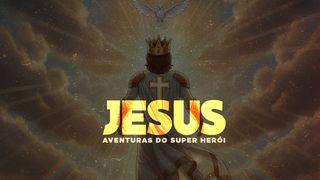Belmont University Advent GuideExemplo

Jesus had left the temple and returned to the Mount of Olives. His disciples had gathered around to ask a question: What sign could they expect of Jesus’ coming and the end of the age? In typical fashion, Jesus answers their question indirectly through a series of parables, including one about the Faithful and Wicked Slaves.
Jesus begins with a question—“Who then is the faithful and wise slave?” He describes two slaves who had been put in charge while the master is gone. The reliable one does the work expected of him and is blessed accordingly. The other, seeing his master is absent, makes two mistakes. Mistake #1: he misbehaves. He overindulges in drink and food with the drunkards and abuses his fellow slaves. Mistake #2: he assumes his master will not return. In effect, he stops looking for his master and he stops waiting for his master.
What does this mean for us as we await the coming of the Christ child?
Well, first, the difference between the two servants is not just between obedience and disobedience. It is between wisdom and foolishness. Wisdom here means waiting in expectation—being on the lookout at any time for the living God to show up. Barbara Brown Taylor says she had a professor who joked that the Second Coming of Christ was cooked up by an early church father who had only two fingers. God has not limited the number of God’s comings into our world. In this Advent season, we wait for Christ’s birth, but the reality is, if we stay alert and take note, Christ comes over and over to us in moments of daily life.
Wisdom is also in the good work of living prepared. Jesus does not explain what the good work was that sustained the wise slave through the waiting, but his follow up to this parable in the Judgment of Nations clarifies what Jesus means by it and how he wants us to use time as well. In this public scene of final reckoning, the judgment on the sheep and goats hinges on seeing and responding to Christ in the suffering of others. In response to his disciples’ original question asking Jesus for a sign of the end times, perhaps Jesus is telling the disciples that the sign is they will have the time to feed the hungry, clothe the naked, give drink to the thirsty, and care for the sick and those in prison.
This Advent, may we wait with eyes peeled for moments of Christ’s comings and live prepared.
Cynthia Curtis
Assistant Professor of Religion
Jesus begins with a question—“Who then is the faithful and wise slave?” He describes two slaves who had been put in charge while the master is gone. The reliable one does the work expected of him and is blessed accordingly. The other, seeing his master is absent, makes two mistakes. Mistake #1: he misbehaves. He overindulges in drink and food with the drunkards and abuses his fellow slaves. Mistake #2: he assumes his master will not return. In effect, he stops looking for his master and he stops waiting for his master.
What does this mean for us as we await the coming of the Christ child?
Well, first, the difference between the two servants is not just between obedience and disobedience. It is between wisdom and foolishness. Wisdom here means waiting in expectation—being on the lookout at any time for the living God to show up. Barbara Brown Taylor says she had a professor who joked that the Second Coming of Christ was cooked up by an early church father who had only two fingers. God has not limited the number of God’s comings into our world. In this Advent season, we wait for Christ’s birth, but the reality is, if we stay alert and take note, Christ comes over and over to us in moments of daily life.
Wisdom is also in the good work of living prepared. Jesus does not explain what the good work was that sustained the wise slave through the waiting, but his follow up to this parable in the Judgment of Nations clarifies what Jesus means by it and how he wants us to use time as well. In this public scene of final reckoning, the judgment on the sheep and goats hinges on seeing and responding to Christ in the suffering of others. In response to his disciples’ original question asking Jesus for a sign of the end times, perhaps Jesus is telling the disciples that the sign is they will have the time to feed the hungry, clothe the naked, give drink to the thirsty, and care for the sick and those in prison.
This Advent, may we wait with eyes peeled for moments of Christ’s comings and live prepared.
Cynthia Curtis
Assistant Professor of Religion
Sobre este plano

This Advent Guide comes from students, faculty and staff at Belmont University. Advent is that season of waiting that carefully and purposefully helps us to realign our priorities and to glimpse, anew, our place before God. Our humble hope is this guide helps people focus more fully on Jesus Christ through the Advent season.
More

